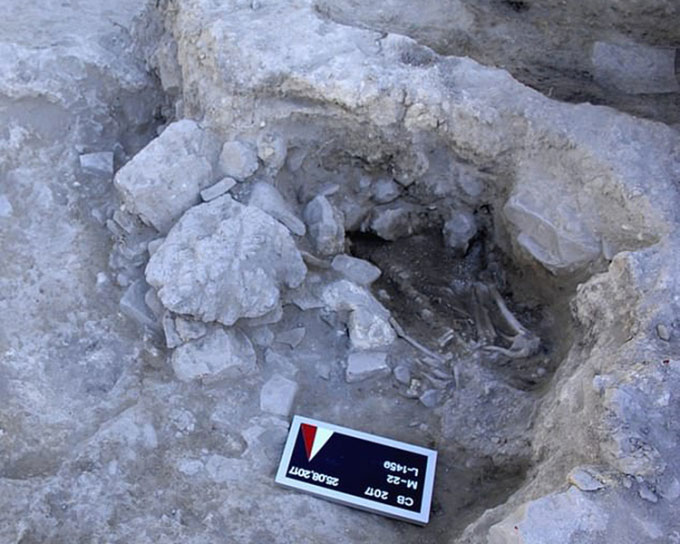For the first time, experts have uncovered the remains of a victim who died in a tsunami following the Thera volcanic eruption.
Scientists have discovered the remains of a young man and a dog who perished in the tsunami caused by the Thera volcanic eruption 3,600 years ago during excavations at Cesme-Baglararasi, near Cesme Bay on the western coast of Turkey. The new research was published in the Proceedings of the National Academy of Sciences on December 28.

Remains of a young man excavated in Turkey. (Photo: Vasif Sahoglu/Proceedings of the National Academy of Sciences).
Thera is now a volcanic caldera located in the center of Santorini Island, Greece. Using carbon dating methods on tsunami sediments at Cesme-Baglararasi, the research team believes that the eruption occurred as early as 1612 BCE. The study was conducted by archaeologist Vasif Sahoglu from Ankara University along with colleagues.
Although the Thera eruption is considered one of the largest natural disasters in history, this is the first time experts have uncovered the remains of a victim from the event. Additionally, the presence of tsunami sediments at Cesme-Baglararasi indicates that large and devastating waves reached the northern Aegean Sea following the Thera eruption.
Previously, based on available evidence, scientists believed that this Mediterranean region only suffered from ash fallout from the volcanic eruption. However, the new study shows that the Cesme Bay area experienced a series of tsunamis, which devastated local settlements.
At Cesme-Baglararasi, the team also found remnants of damaged walls, which may have once been part of a fortification or similar structure, along with layers of rubble and chaotic sediments characteristic of tsunamis. Among these were two layers of volcanic ash, with the second layer being thicker than the first, and another layer containing charcoal and carbonized materials. According to the research team, these sediments represent at least four distinct flooding events caused by consecutive tsunamis, all resulting from the Thera eruption.
Evidence of distorted pits dug into the tsunami sediments at various locations in Cesme-Baglararasi indicates efforts to retrieve victims from the rubble. The remains of the young man were found about one meter deep in one of these pits. This suggests that the victim was buried too deep to be discovered and rescued, thus inadvertently left behind. Scientists also found the skeleton of a dog in a nearby collapsed doorway.
The remains of the man were discovered at the site of the most severe damage to the wall and were located at the bottom of the sediment layer, characterized by large and heavy stones, some measuring over 40 cm in diameter, complicating rescue efforts. Additionally, the skeleton showed signs of being swept along by debris flows.


















































